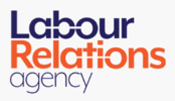Bullying and harassment
Drawing up an anti-bullying and harassment policy
Ideally, you should draw up a bullying and harassment policy in consultation with staff and/or their representatives.
For example, trade unions may help you as they may well have experience in handling bullying and harassment cases.
What to include in your bullying and harassment policy
Your policy on bullying and harassment could include:
- An explanation of what the terms mean and that harassment covers all the areas protected by the anti-discrimination laws. See how to prevent discrimination and value diversity.
- Examples of behaviour that could be considered bullying and harassment.
- A statement that bullying and harassment will not be tolerated and could result in the bully or harasser being subjected to disciplinary action, which may result in dismissal.
- A clear statement on the appropriate use of social media and an explanation that inappropriate comments made on social media sites, eg, Facebook, X, LinkedIn, etc, about work colleagues, clients, customers or suppliers could lead to disciplinary action being taken against those involved, even if made away from the workplace. You may wish to adopt and link to a social media use policy - a template is available in the Labour Relations Agency's free Employment Document Toolkit.
- A statement pointing out that bullying and harassment will not be tolerated at work-related events, eg Christmas parties, or training courses - even if they are away from the normal workplace.
- Details of the procedures to be followed if bullying and/or harassment occurs, including both informal and formal approaches and relevant timescales that should be linked to your discipline and grievance procedures.
- Assurance that any complaint will be taken seriously and treated confidentially and that employees making complaints will be protected from retaliation.
- Assurance that a thorough and fair investigation of a claim will take place.
- A statement that where matters are being handled formally, there will be a meeting with the complainant to discuss the matter further, a decision issued as a result of the meeting and the employee will have the right of appeal.
- Sources of guidance and support.
- Where the company has trained harassment contact officers/counsellors or dignity at work advisors, the employee could be encouraged to discuss their issues with them in the first instance.
You should also include the name of the person the employee should contact if they wish to raise a complaint about bullying/harassment. This would normally be the line manager or another manager if the employee is uncomfortable raising the issue with their line manager.
Download the Equality Commission's model harassment and bullying policy (DOC, 68K).
Dignity at work webinar
The Labour Relations Agency (LRA) dignity at work webinar provides useful information on the topic of bullying and harassment. The webinar addresses the issue of bullying and harassment in the workplace by looking at core issues such as distinguishing bullying from harassment, the law and liability, and the formal and informal approaches to dealing with bullying and harassment. The webinar is suitable for both employers and employees.
- LRA Workplace Information Service03300 555 300
